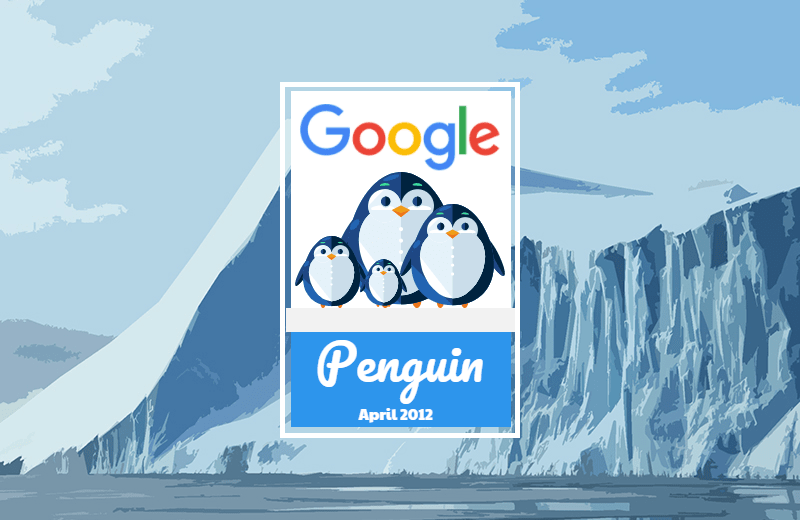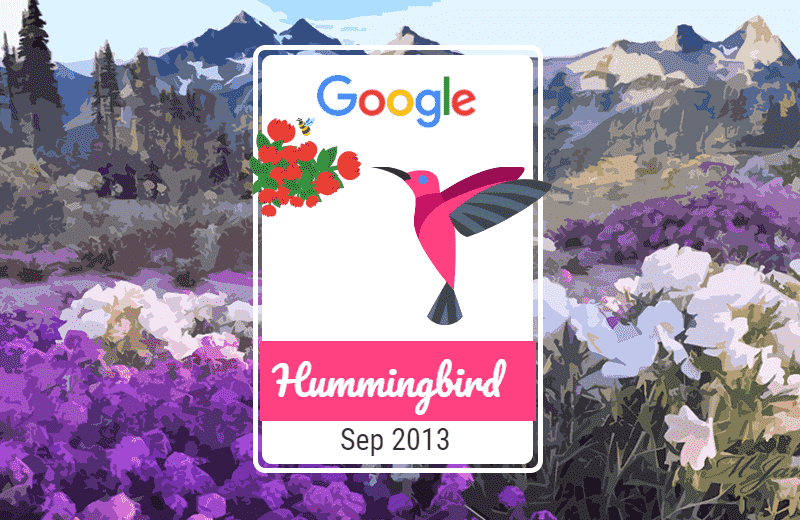I hope you enjoy reading this blog post.
If you want to get more traffic, Contact Us

Click Here - Free 30-Minute Strategy Session
Be quick! FREE spots are almost gone for this Month. Free Quote

Google’s all-knowing, super powerful and forever improving search engine algorithm is the lifeline of Internet. With each update, Google has brought a revolution in SEO strategies and shifted the overall spectrum of online businesses. Achieving online success is almost impossible without understanding Google algorithm updates over the past few years.

Click Here – Free 30-Minute Strategy Session
Be quick! FREE spots are almost gone for this Month
This article will clarify the differences between Panda, Penguin, Pigeon, Hummingbird, Pirate and other algorithms. Additionally, on finishing article, you will be armed with the best practical tips to leverage each of these updates towards increasing your website traffic and search engine rankings.

Undoubtedly, one of the most famous Google algorithm updates, Panda was specifically designed to target content farms and scraper websites producing shallow, low-quality, copied or spun content. Upon its release, more than 11% search queries were affected and a majority of content-farm websites such as Hub pages, Ehow.com etc. faced serious ranking penalties. Since its initial release, Panda algorithm has been run 30 times and the latest Panda 4.2 update occurred on July 18, 2015.
Panda algorithm basically crawls through an entire website’s pages and if its results fall below a certain threshold, the whole website gets penalized reducing its targeted traffic to as much as 50%. Previously, penalized users had to wait for the next update to see improvement in their rankings. However, with the 4.2 update, Panda has been integrated with Google’s core search ranking factors and now updates in real-time.
After detailed analysis from top SEO experts, following factors have been found most responsible for a Panda penalty:

After Panda, Google algorithm changes took an even more dramatic turn with the inclusion of Google Penguin. While Panda was specifically targeted towards on-site page content, Penguin algorithm dealt solely with the incoming backlinks for any website. Prior to Penguin, black hat SEOs used cheap linking services to improve site’s overall SERP. Just like Panda, Penguin was integrated with Google’s real-time core algorithm with the release of Penguin 4.0 update on Sep 2016.
Instead of penalizing an entire website, Penguin penalty targets specific pages, though if the penalized page is an organic search magnet then that could still lead to 50% drop in traffic. Acting as a bane for blackhat SEOs, it acted against those who sought to game top search rankings through low-quality backlinks. Penguin update paved the way forward for white hat SEO strategies.
To prevent Google Penguin penalty, some important white hat tactics can be adopted:
Generally, links from reputable sources avoid the penalties. You can analyze incoming links through Google Search Console or Google Penguin tool. Moreover, quality third party tools are also available for backlink analysis.

Google Hummingbird is undoubtedly bigger than Panda, Penguin and other changes combined. That’s because it fundamentally changes the whole engine behind the operations. Think of it as an older model car getting a newer engine while using certain previous parts such as Penguin and Panda.
With Google Hummingbird, keyword targeting searches are changed to adapt towards conversational queries. Instead of giving search results based on keywords, Google of today utilizes semantic indexing, knowledge graphs and query rewriting to get the intent of query. With its database, Google collects information about its individual users and then generates search results based on the location, keyword, and intent of the query.
Hummingbird is surely the greatest stride towards content relevance. Panda and Hummingbird combined focus solely on relevant content that tends to provide answers to user queries. Latent schematic indexing (LSI) keywords have gained prominence with this update. Since Google has started focusing purely on content, black-hat SEO has become tougher. As the Google algorithm changes continue to occur, SEO specialists have deemed following practices as important:
Content marketers should focus more on delivering posts that provide value and answer the general conversational queries of users
Data validation of statistics and figures through reputable websites will contribute towards your ranking. Bottom line – website owners now need to focus on creating content for humans instead of search engines.
First sighted on July 24, 2014, Google Penguin utilizes the capabilities offered by the Hummingbird update. This release was an improvement feature instead of a penalty. It was aimed towards local search engine ranking algorithm and affects the SERPs, rankings and referrals statistics of local businesses. Initially released only in the USA, it was later expanded to United Kingdom, Canada, and Australia.
The major changes brought about by this update were reflective of the local search results and local Google map results. It also brought focus on local businesses directories like Yelp, Kayak, Zagat, and Tripadvisor. Businesses represented on these listings reported higher visibility within search pages. Those that have neighborhood focused keywords content, directory listings, tags, and domains enjoyed a greater visibility on rankings. Local neighborhood distances and location finding perimeters were also improved through this update.
As is the case with each Google algorithm update, Pigeon brought about another change in SEO marketing strategies for local businesses.
21st century is the age of smartphones and Google in all its algorithmic smartness is poised to embrace the new technological era. Mobilegeddon released on April 21, 2015, rewarded websites which had a more mobile-friendly design. Though in its initial stages, nevertheless, Mobilegeddon promises websites dominated by smartphone friendly design. On its release, the new Google algorithm immediately penalized worst mobile offenders.
Some tools and tricks are available to assist website designers in developing a more mobile friendly design.
In its ongoing campaign to improve user-experience, Google algorithm next targeted the advertisements section, particularly those above the fold. It is because of this reason that the algorithm was also termed as ‘Ads above the Fold’. The latest update to this algorithm happened back in February 2014.
To quote a little history, top heavy update was rolled out as a result of customers’ dissatisfaction on finding advertisements only at the top of the page without any meaningful content. Ads above the fold are a common strategy used by affiliate marketers, e-commerce blogs, investors and small businesses. Major campaign ads, banners, and promotional links are placed at the top for maximum conversion and exposure. Google understands that and only penalizes websites that go over limit with above fold advertisements placement.
To avoid a penalty, web designers should perform following key changes to their Page layout:
Google is the unofficial internet police and it was only a matter of time before the pirated website and copyright violators got hit by Google penalties. These Google algorithm updates were brought about as a result of continuous complaints by the entertainment and music industry against Google. Pirated content was robbing the industry of its legitimate revenues and as a result, Google introduced a new algorithm.
Google Pirate works by analyzing the number of DMCA (Digital Millennium Copyright Act) complaints registered against a website. If they cross a certain threshold, SEO visibility for that website can be lowered by as much as 98%. Google’s Pirate 2.0 update, in particular, spelled doom for many torrent websites.
Once new Google algorithm update went into effect, torrent results for popular TV shows, movies and music completely disappeared. Only legal video streaming and downloading websites could survive Google’s crackdown. Pirate websites are notorious for the malware, excessive ads and illegal content associated with them.
Avoiding Google Pirate penalties is very simple as it requires you to simply stop stealing. Distribution of entertainment content through proper copyright agreements is completely legal under Google’s watchful eye.
Prior to EMD Google algorithm updates, many website owners used Exact Match Domains for gaining top search engine rankings. Affecting 0.6% search engine queries, the purpose of this algorithm update was to mainly target websites with poor-quality content that managed to rank high thanks to their keyword targeted domain names. Micro-niche websites were especially hit hard by these changes.
This update, in particular, brought about the need for brand advertising and quality content. EMD penalty can be avoided by performing following changes:
The update was met with mixed reactions though it certainly solved the problem of thin content websites ranking higher on search pages.
Google algorithm changes struck like a lightning bolt for spammy queries. Google Payday, first rolled out on June 11, 2013, mostly countered top-tier Blackhat SEOs who utilized a variety of spamming techniques to improve their search engine rankings. It is commonly known as spamdexing in blackhat terms.
Heavy traffic keywords are associated with payday loans, finance, Viagra, diet supplements, weight loss and pornographic websites. Those who operate in these niches use countless black hat methods to try and rank higher in search engines. The content is generally low, spammy, duplicate or unoriginal in nature.
Payday loan 1.0 was followed by Payday 2.0 and Payday 3.0 that further improved upon the initial release. As a result of this update, search queries related to above-mentioned terms were permanently removed. Recently Google is working to remove ads that operate under these niches as they are usually found to be illegal and against Google’s policies. Those who operate legally in these categories need to be extra careful to avoid coming off as spammers. Avoid any blackhat methods and you will remain safe from this penalty.
As Google continues to reach new heights with its intuitive algorithm, tracking all the Google algorithm updates and changes becomes harder. However, our article has combined all the groundbreaking changes at a single place for your quick reference. Regardless of the changes, always remember to provide value through your content, avoid negative SEO and try to serve your readers as passionately as possible.
Most importantly, learn to adapt yourself to change in the ever dynamic internet world. If you believe that our article helped clarify your confusions or if you have any suggestions for improvements, please feel free to share your thoughts with us through the comments section. We love how our reader-base continues to bring forward new innovative ideas and therefore would like you to chip in as well.
(Reference: https://www.youtube.com/watch?v=rjJ6g5QNVrU)


LEAVE A REPLY